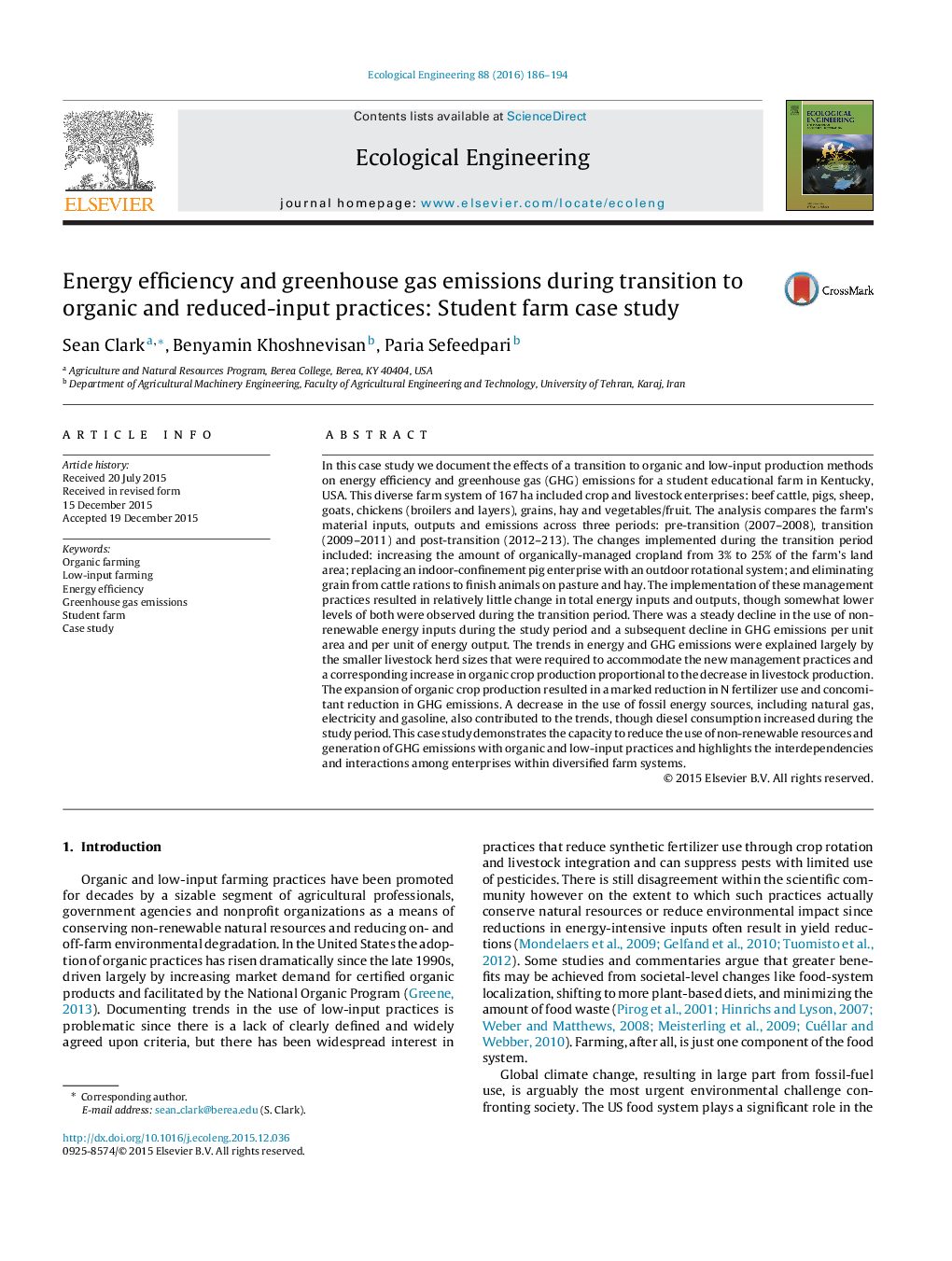| Article ID | Journal | Published Year | Pages | File Type |
|---|---|---|---|---|
| 6301557 | Ecological Engineering | 2016 | 9 Pages |
Abstract
In this case study we document the effects of a transition to organic and low-input production methods on energy efficiency and greenhouse gas (GHG) emissions for a student educational farm in Kentucky, USA. This diverse farm system of 167Â ha included crop and livestock enterprises: beef cattle, pigs, sheep, goats, chickens (broilers and layers), grains, hay and vegetables/fruit. The analysis compares the farm's material inputs, outputs and emissions across three periods: pre-transition (2007-2008), transition (2009-2011) and post-transition (2012-213). The changes implemented during the transition period included: increasing the amount of organically-managed cropland from 3% to 25% of the farm's land area; replacing an indoor-confinement pig enterprise with an outdoor rotational system; and eliminating grain from cattle rations to finish animals on pasture and hay. The implementation of these management practices resulted in relatively little change in total energy inputs and outputs, though somewhat lower levels of both were observed during the transition period. There was a steady decline in the use of non-renewable energy inputs during the study period and a subsequent decline in GHG emissions per unit area and per unit of energy output. The trends in energy and GHG emissions were explained largely by the smaller livestock herd sizes that were required to accommodate the new management practices and a corresponding increase in organic crop production proportional to the decrease in livestock production. The expansion of organic crop production resulted in a marked reduction in N fertilizer use and concomitant reduction in GHG emissions. A decrease in the use of fossil energy sources, including natural gas, electricity and gasoline, also contributed to the trends, though diesel consumption increased during the study period. This case study demonstrates the capacity to reduce the use of non-renewable resources and generation of GHG emissions with organic and low-input practices and highlights the interdependencies and interactions among enterprises within diversified farm systems.
Related Topics
Life Sciences
Agricultural and Biological Sciences
Ecology, Evolution, Behavior and Systematics
Authors
Sean Clark, Benyamin Khoshnevisan, Paria Sefeedpari,
